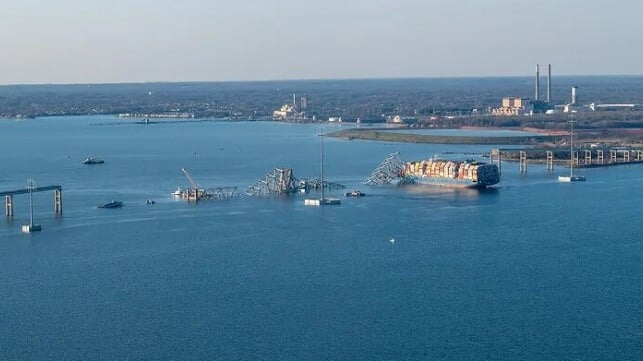Michael Grey*

A modern ship is a complex creature, packed with different systems, machinery and equipment and at any one time it is inconceivable that they will all be operating without any fault. You might argue that ships have always been like that and the essence of seamanship and good marine engineering is to have the skills necessary to “work around” any temporary deficiencies until they can be made good. With the ship at sea, such dependence on alternatives; the “jury rig,” or auxiliary power sources, may be essential to keep the ship operational, or on schedule.
In the modern ship, alarms, we are told, are sounding with “alarming” frequency, set off by vibration or a myriad of other causes and the judgement of the contemporary marine engineer is required to assess whether these need further action, or merely to cancel the nuisance. But, as a very experienced Chief Engineer said recently, there is no ship afloat with something that doesn’t need fixing. But how serious is serious -that is the question?
These thoughts came to the fore upon reading that agents of the US Federal Bureau of Investigation are now poring over the records aboard the Dali which currently remains pinned by the wreckage of the Baltimore bridge on her foredeck. While the investigators of the National Transportation Safety Board will be analysing the circumstances of the accident in what might be considered a holistic fashion, the role of the “Feds” will be to ascertain whether any Federal regulations appertaining to the operation of the ship might have been breached.
One might suggest that they will be looking exceptionally closely at any previous technical faults that might have a bearing on the temporary blackout which seems to have been responsible for the crash. Who, in the operational chain that leads from the ship to its technical management ashore, charterers and ultimate ownership, knew about what? And was any of this relevant to the circumstances of the accident?
All of this is to be expected in any major accident today, especially when the costs of the calamity will be so staggeringly high. The questions of liability, which will resound long after the ship has been released from the wreckage, will surely come to the fore as the regulators and lawyers assume a more prominent role. Matters of seaworthiness will almost certainly be the source of forensic analysis, as experts weigh up whether any of those faults which might have been registered by the ship’s staff in the months (or even years) prior to the accident had any important bearing to the subsequent events. Ultimately, there may well be an attempt to circumscribe the efforts of the owners to limit their liabilities, based on the conclusions of the Federal authorities.
Accidents happen, it is often said in a placatory fashion, but these days it will be a rare incident in which blame does not adhere to one party or another. There used to be a wonderful word used extensively in English law – “reasonable” – but it is heard rather less in an era where blame is rather more important. Was it reasonable for the ship to sail, bearing in mind what was on the lists of faults (if any) that had been previously logged by her on-board staff and technical management?
The feasibility of armouring bridge columns…
But, we might also ask whether it was reasonable for the authorities responsible for the bridge in Baltimore not to have taken a more precautionary approach, as they saw the size and dimensions of ships more than quadruple in the fifty years since the structure was erected. Did nobody in authority foresee a ship coming down on the ebb “losing it” close to the bridge? They could, with hindsight, have spent some money on properly armouring the columns on either side of the deep-water channel, or at the least mandated the requirement for tugs to remain attached to large passing ships. Any possible liabilities here?
It is possible to erect formidable defences against a ship strike, as evidenced by other casualties. If this is in any doubt, there was quite amazing photographic evidence of an incident in January, when a large bulk carrier went out of control in the Parana River in South America. The vessel rammed into the concrete protection, which appeared completely unscathed, as did the bridge itself. By contrast, three compartments on the vessel’s port bow were ripped open.
(Unified Command photo)
*Michael Grey is former editor of Lloyd’s List. This column is published with the kind permission of The Maritime Advocate.





